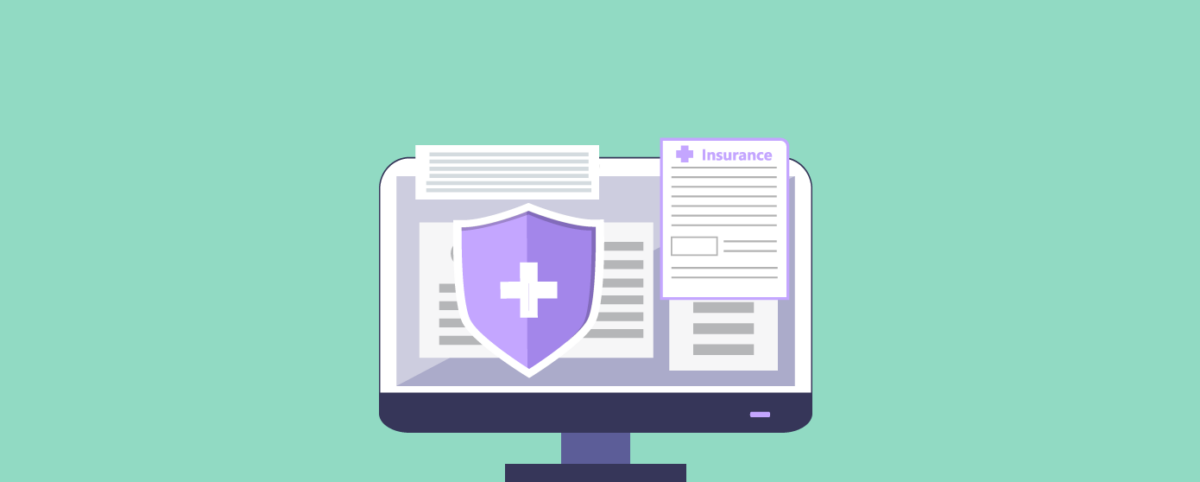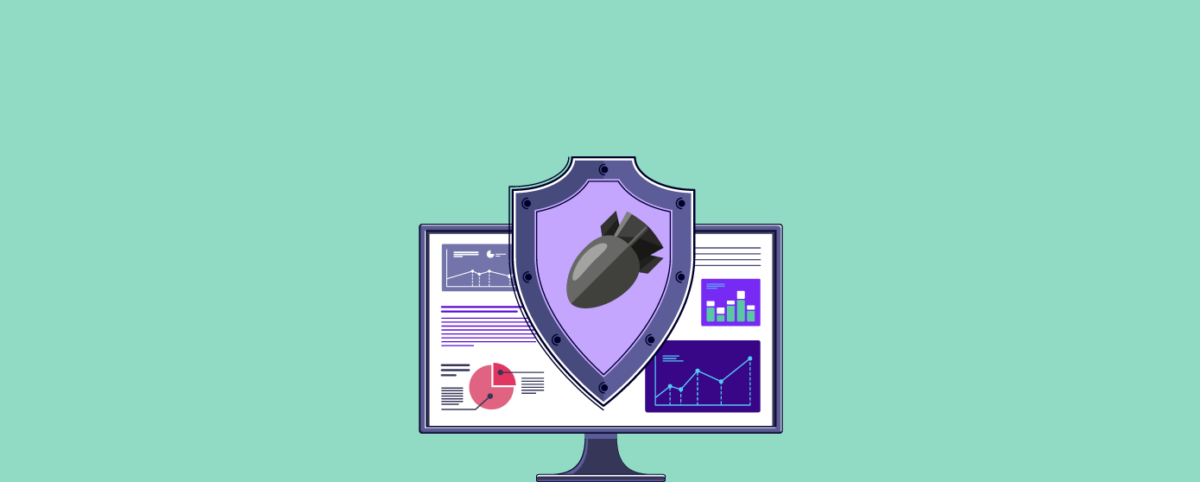Managed DDoS Protection for SaaS Companies: Ensuring Availability, Security, and Business Continuity
SaaS companies face a 20% yearly likelihood of a significant DDoS attack, according to the Indusface State of Application Security H1 2025, underlining the risks to uninterrupted operations.
Even brief downtime can have severe consequences. On average, a DDoS attack requires 12 hours for monitoring, analysis, and mitigation, translating to roughly 2.4 hours of annual downtime per SaaS application. This can disrupt workflows, breach SLAs, and erode customer trust.
Unlike traditional IT systems, SaaS platforms rely on continuous uptime to maintain customer operations, integrations, and service commitments. Any disruption can have cascading effects, from delayed transactions and lost productivity to reputational damage and churn. This is why managed DDoS protection is essential for SaaS companies.
How DDoS Attacks Disrupt SaaS Platforms
For SaaS companies, DDoS attacks are not just technical nuisances, they directly impact uptime, customer trust, and recurring revenue. Different attack vectors create unique risks:
- Volumetric floods – Massive traffic floods (UDP/ICMP) overwhelm SaaS infrastructure, making login pages, dashboards, and APIs completely unavailable. Even a few minutes of downtime leads to SLA violations and user churn.
- Protocol-level attacks – SYN floods or fragmented packets can exhaust server resources, disrupting backend systems that power multi-tenant SaaS applications. This often impacts not just one customer but all tenants simultaneously.
- Application-layer (L7) floods – HTTP floods or low-and-slow attacks target specific SaaS workflows such as billing, signup, or file uploads. These stealth attacks degrade performance without immediately triggering volumetric defenses.
- Bot-driven API abuse – Credential stuffing, scraping, or fake account creation overwhelms SaaS APIs. Beyond downtime, this also inflates infrastructure costs and exposes platforms to fraud or compliance risks.
SaaS Use Cases Where Managed DDoS Protection Is Critical
1. Multi-Tenant SaaS Platforms
A single disruption affects multiple clients at once, exponentially increasing SLA risk. Intelligent traffic isolation and tenant-aware filtering safeguard against cross-tenant impact.
2. APIs & Integrations
SaaS platforms depend on a web of third-party integrations. During a DDoS attack, malicious traffic targeting these endpoints can disrupt partner workflows, degrade performance, and block legitimate requests.
3. Real-Time Collaboration & Messaging
Features like chat, video conferencing, or shared workspaces are highly latency-sensitive and vulnerable to floods targeting signalling or WebSocket endpoints.
4. Billing & Subscription Systems
Disruption of transaction flows can lead to revenue loss, payment disputes, or compliance consequences for regulated clients.
5. SaaS Admin Portals & Back-Office Systems
When support, configuration, or provisioning systems go offline, your team cannot respond to issues, magnifying the impact of customer-facing outages.
Must have Managed DDoS Protection Capabilities for SaaS
For SaaS companies, uninterrupted uptime is critical. To keep SaaS applications resilient, these DDoS protection capabilities are essential:
AI-Powered Detection with Expert Tuning
A strong managed DDoS protection solution continuously monitors traffic across APIs, tenants, and endpoints using AI models to detect anomalies in real time. SOC experts fine-tune detection rules, reducing false positives while ensuring legitimate traffic surges like product launches or seasonal spikes remain unaffected. A reliable solution should provide transparent metrics on detection accuracy and past performance.
Global Traffic Scrubbing with SaaS-Aware Routing
Distributed scrubbing nodes absorb terabit-scale attacks at the network edge, preventing malicious traffic from reaching origin servers. During an attack, the managed service should dynamically optimize routing paths, prioritize API requests, and maintain session continuity. Evaluate whether the vendor offers unmetered protection and global edge coverage to handle attacks of any magnitude.
Real-Time Mitigation with Adaptive Controls
Advanced solutions apply adaptive rate-limiting, session profiling, and behavioral analytics to separate malicious traffic from legitimate users. SOC teams should be able to escalate controls in real time, deploy per-endpoint throttling, and use deception tactics if attackers evolve mid-campaign. As a best practice, always check with the OEM whether behavioural DDoS is included in the plan. A lot of times this is an add-on and has tiered pricing.
24/7 SOC Support for Multi-Vector Campaigns
DDoS threats don’t stop at business hours. DDoS protection should include round-the-clock SOC monitoring, incident response, and coordination with your DevOps team. Verify that the SOC actively manages multi-day, multi-vector campaigns and provides custom mitigation playbooks for consistent, rapid response.
Audit-Ready Visibility and Compliance Support
The solution must provide structured, context-rich logs and reports for SLA verification, regulatory compliance (SOC 2, PCI DSS, ISO 27001, GDPR), and internal audits. Ensure the DDoS protection vendor’s reporting clearly documents attack patterns, mitigations, and outcomes, supporting both operational oversight and regulatory readiness. Check for log retention windows as they are typically capped to a couple of weeks.
Tenant-Aware Controls and Multi-Tenant Visibility
For multi-tenant SaaS platforms, the managed DDoS solution should offer tenant-specific dashboards, risk scoring, and customizable policy enforcement. This ensures one client’s high traffic or malicious attempts don’t trigger false positives or mitigation for others, keeping all customers’ services unaffected.
Global Threat Intelligence & Continuous Updates
Modern attacks evolve rapidly. A robust managed DDoS provider leverages global threat intelligence, continuously updating behavioral models, detection signatures, and mitigation strategies. Confirm that the solution adapts quickly to emerging attack tactics and provides proactive protection across all tenants and endpoints.
How AppTrana’s Managed DDoS Protection Secures SaaS Platforms
AppTrana’s WAAP delivers fully managed, unmetered DDoS protection that adapts seamlessly to SaaS environments where uptime, API reliability, and tenant isolation are critical. With AI-driven analytics, global edge infrastructure, and 24/7 SOC expertise, AppTrana maintains resilience against even the most complex DDoS campaigns.
1. Low-Latency Edge Scrubbing:
AppTrana filters DDoS traffic at globally distributed scrubbing nodes, ensuring SaaS applications remain responsive even during large-scale attacks. By processing traffic close to users, legitimate API requests, dashboards, and login flows continue uninterrupted, maintaining optimal performance.
TLS termination occurs at the edge with HTTP/2 and HTTP/3 support for efficient multiplexing and low-latency delivery.
Key metrics track the effectiveness of this protection, including log ingestion latency, time to first investigative clue, coverage of protected endpoints, false positives by segment, P95 latency by segment, and challenge versus block ratio, helping teams monitor both security and user experience in real time.
2. Granular Endpoint & Tenant-Specific Protection
Unlike monolithic apps, SaaS platforms often host multiple tenants with diverse APIs, portals, and collaboration tools. Attackers may target one tenant’s API, but the risk cascades across the entire SaaS ecosystem.
- Granular endpoint protection: Per-endpoint WAAP rules, bot intelligence, and adaptive rate-limiting ensure that login APIs, billing APIs, and admin portals each have unique ddos mitigation profiles.
- Tenant-aware security: AppTrana’s anomaly detection isolates tenant-specific traffic baselines, so a spike in one tenant’s activity does not trigger unnecessary throttling across the platform.
- Adaptive rate limiting: Dynamic thresholds automatically adjust to traffic surges from product launches, seasonal usage spikes, or marketing campaigns, avoiding false positives.
3. Performance Optimization via CDN & Caching
DDoS attacks often aim to exhaust server capacity, making caching and content delivery critical for SaaS uptime. AppTrana reduces origin load by offloading static assets like scripts, images, and stylesheets to globally distributed CDN nodes, while dynamic API and transactional traffic remain protected at the origin. Adaptive rate-limiting, combined with tiered caching and stale-while-revalidate strategies, ensures that sudden traffic spikes or malicious floods do not overwhelm the platform, maintaining uninterrupted access to critical workflows like payments, onboarding, and authentication.
4. Schema-Aware API Validation
SaaS APIs are essential yet vulnerable to floods, malformed requests, and abuse. AppTrana ensures only compliant traffic reaches your services through schema-driven positive security.
Incoming requests are validated against OpenAPI or custom API profiles, enforcing allowed types, field bounds, required parameters, and method-path allowlists. Sensitive operations are protected with duplicate-request safeguards, token validation, and replay protection. This approach blocks malformed requests, prevents automated attacks, and preserves partner or third-party integrations.
Key Benefits:
- Only well-formed, authorized requests reach SaaS endpoints.
- Sensitive API calls are shielded from abuse without affecting legitimate traffic.
- Metrics track dropped invalid requests, authentication failures, and schema deviations for continuous monitoring and compliance reporting.
5. Comprehensive Logging & Compliance Reporting
For SaaS providers, visibility into traffic and incidents is as critical as mitigation. AppTrana captures structured logs across all layers edge scrubbing, WAAP, and bot protection, enabling near real-time insights and audit-ready evidence. These logs are retained for 365 days and SIEM integration allows customers to push these logs on a real-time basis.
Structured, multi-layer logging: Each request is assigned a global correlation ID and recorded with key attributes such as IP, JA3 fingerprint, user agent, token subject, route, and mitigation decision.
Seamless SIEM integration: Logs are streamed to SIEMs or data lakes in real time, supporting rapid forensic analysis and continuous improvement of defenses.
Operational insights: Metrics track log ingestion latency, time to first investigative clue, coverage of protected endpoints, and detection accuracy across segments, helping teams fine-tune policies without disrupting legitimate SaaS traffic.
6. Elastic Resilience & Attack Runbooks
SaaS businesses cannot rely on fixed-capacity defenses, attackers scale, so defenses must too.
- Autoscaling enforcement: AppTrana expands mitigation capacity in real time as attack traffic grows.
- Circuit breakers: Non-essential services (e.g., reporting dashboards) are throttled first, ensuring billing, login, and collaboration services remain uninterrupted.
- Runbooks & playbooks: SOC teams follow pre-defined escalation paths, enabling consistent, rapid response during evolving attacks.
7. Data Privacy & Third-Party Controls
Since SaaS platforms often process sensitive customer data, AppTrana enforces privacy-first principles alongside DDoS defense.
- Data minimization: Logs only store the request headers and payloads and do not store Personally Identifiable Information (PII) and PHI. Only signals required for detection (request metadata, session IDs) are retained.
- Zero-trust partner management: Third-party integrations are monitored with quotas, rate-limits, and dedicated policies to prevent collateral damage from insecure partner traffic.
- Regulatory alignment: These measures support GDPR, HIPAA, and other global compliance frameworks critical for SaaS providers handling sensitive workloads.
8. Continuous SOC Expertise at the Core
Technology alone does not win against modern DDoS. AppTrana’s 24/7 SOC acts as an extension of the SaaS provider’s security team:
- Human-in-the-loop defense: Analysts validate anomalies, create custom mitigation rules, and escalate responses.
- Threat intelligence integration: SOC teams proactively update policies based on global DDoS campaigns, preparing SaaS defenses before attacks even hit.
- Partnership approach: Beyond attack response, SOC experts collaborate with SaaS DevSecOps teams on resilience planning, compliance reporting, and capacity design.
By combining AI-driven detection model, WAAP/WAF integration, edge infrastructure, SOC expertise, and proactive threat intelligence, AppTrana ensures SaaS platforms remain resilient, compliant, and trusted, even under the most sophisticated multi-vector DDoS campaigns.
Keep your SaaS applications secure and available. Start your free trial of AppTrana’s managed DDoS protection today!
Stay tuned for more relevant and interesting security articles. Follow Indusface on Facebook, Twitter, and LinkedIn.


 October 8, 2025
October 8, 2025






